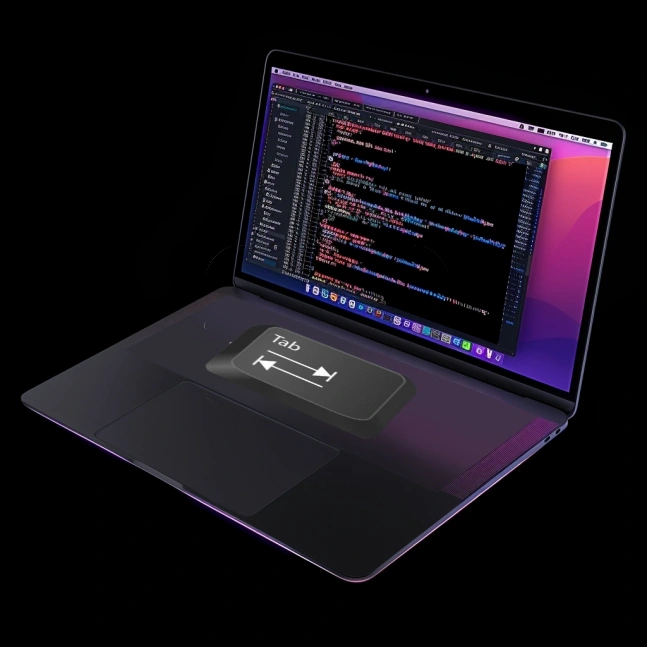Table of Contents
Introduction
Future of Coding is an ever-evolving field, constantly adapting to new technologies and methodologies. One of the latest trends gaining momentum is coding on tablets. With their portability and ease of use, tablets offer a unique way to code on the go. But is this just a fad, or does it represent the future of coding? This blog delves into the possibilities of coding on tablets, exploring whether it’s feasible to learn and perform tasks using a tablet. We’ll also examine use cases, case studies, and market revenue projections to understand the potential growth in this area.
Can We Use Tabs for Coding?
Yes, tabs can be used for coding! Tablets have come a long way from being just devices for media consumption and casual browsing. Today’s tablets are equipped with powerful processors, ample RAM, and compatibility with a variety of coding applications, making them suitable for various tasks. Tablets like iPads and high-end Android devices now support a range of Integrated Development Environments (IDEs) and code editors, such as Visual Studio Code, Juno, and even cloud-based IDEs like AWS Cloud9 and Repl. it.

Advantages of Using Tabs for Coding:
- Portability: Tablets are lightweight and easy to carry, making them perfect for coding on the go.
- Touchscreen Interface: The touchscreen interface of tablets can provide a more intuitive and interactive experience, especially for design and UI/UX development.
- Versatility: With a detachable keyboard and stylus, tablets can transform into fully functional coding devices.
- Battery Life: Tablets generally offer longer battery life than most laptops, providing extended coding sessions without the need for constant recharging.
What is a Coding Tab?
A coding tab refers to using a tablet device as a primary or secondary tool for coding and development tasks. It leverages the functionalities of tablets for programming, from writing code to testing and debugging. With the increasing availability of mobile-friendly coding platforms and apps, coding on tablets is becoming more mainstream.

Can We Learn Coding on a Tab?
Yes, learning coding on a tablet is not only possible but also increasingly popular. Tablets offer several educational platforms and apps designed to teach coding, from beginner to advanced levels. For example, apps like Swift Playgrounds (for iPads) and Grasshopper (for Android and iOS) make learning coding languages like Swift and JavaScript accessible and interactive. Online platforms like Codecademy, Coursera, and Udemy are also mobile-friendly and provide comprehensive courses that can be accessed via tablets.
Case Studies
- Educational Institutions: Schools and universities are increasingly adopting tablets to teach coding to students. For instance, some schools use iPads to teach Swift programming through Apple’s Swift Playgrounds app, which offers a hands-on and engaging learning experience.
- Freelance Developers: Many freelance developers prefer tablets for their portability and versatility. Tablets can be easily carried to client meetings, co-working spaces, or while traveling, enabling freelancers to code from anywhere.
- Startup Ecosystems: Startups, particularly those in tech hubs, leverage tablets for rapid prototyping and development. The ability to quickly sketch ideas, write code, and test them on a single device makes tablets an ideal tool for startups.
- Remote Work: With the rise of remote work, developers seek more portable and flexible devices. Tablets are excellent secondary devices for coding, attending virtual meetings, and collaborating on projects through cloud-based platforms.
Conclusion
The future of coding with tabs is not just a trend but a reflection of the evolving tech landscape. As tablets become more powerful and coding applications more versatile, we can expect to see a rise in coding on the go. Whether you’re a student learning the basics or a professional developer seeking flexibility, tablets offer a promising alternative to traditional laptops and desktops. With significant growth potential in the market, coding on tablets is set to become a mainstream practice in the years to come.
What does “Tab, Tab, Tab” refer to in the context of coding?
“Tab, Tab, Tab” refers to the use of code autocompletion tools and AI-driven coding assistants that streamline the coding process. These tools predict and auto-complete code snippets, reducing the need for manual typing and speeding up development.
How do AI-driven coding assistants work?
AI-driven coding assistants use machine learning algorithms to analyze code patterns, understand context, and suggest code completions. They learn from vast datasets of existing codebases and adapt to the specific coding style of the user over time, making coding more efficient and less error-prone.
What are the benefits of using autocompletion tools in coding?
Autocompletion tools help in speeding up the coding process, reducing syntax errors, improving code quality, and enabling developers to focus more on the logic and functionality of the application. They also make coding more accessible to beginners by providing context-based suggestions.
Can autocompletion tools replace traditional coding methods?
While autocompletion tools greatly enhance productivity, they are not a complete replacement for traditional coding methods. They are best used as an aid to complement a developer’s knowledge and skills. Mastery of coding fundamentals is still essential for effective problem-solving and innovation.
What impact will AI and machine learning have on the future of coding?
AI and machine learning will likely revolutionize coding by making it faster, more efficient, and more accessible. They can automate routine coding tasks, provide intelligent debugging suggestions, and even generate entire code modules, allowing developers to focus on creative problem-solving and complex system design.